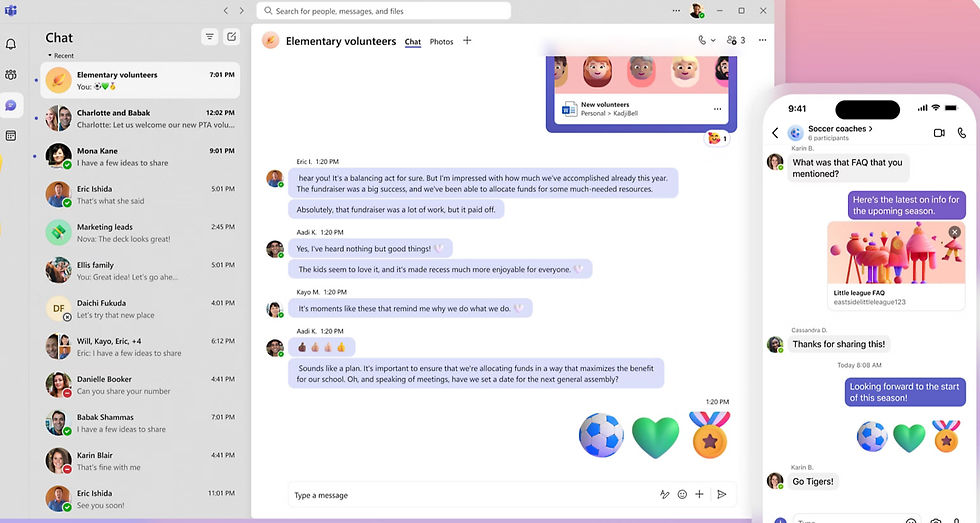
Modern Workplaces
The Microsoft Modern Workplace is a suite of agile workplace solutions, designed to encourage efficiency, communication and collaboration. It leverages Microsoft 365 tools and technologies to create a flexible, secure and user-friendly workspace.
Office
_svg.png)
Microsoft 365 is a subscription-based evolution of Microsoft Office, featuring familiar programs like Word and Excel, but with additional features. It offers different tiers of plans suited for various needs, including business, personal, and family plans. Microsoft 365 includes cloud-based productivity tools and artificial intelligence capabilities, making it a powerful solution for improving workflow and productivity.
Teams
_svg.webp)
Microsoft Teams is a collaborative communications app built for small businesses, large enterprises, and individuals like freelancers, clients, students, and teachers. It simplifies and categorizes all the various interpersonal interactions that need to happen in a business with employees that need to communicate digitally.
From Your Company
Microsoft Teams is the hub for teamwork within Microsoft 365. It fulfills the collaboration and communication needs of a diverse workforce, including chat, meetings, voice, and video. The look and feel of these functions is fast and fluid, has low-overhead, and is instantly familiar.
From The Web
Microsoft Teams is a user-friendly digital collaboration software that competes with Slack and replaces Skype for Business as the premier platform for remote telework. It features VoIP, text, and video chat, alongside easily configured integration with Office and SharePoint, all inside a user-friendly interface.
Organizations use Microsoft Teams because it brings together all communication and collaboration tools in one place, making it easier to share, meet, and work on files together in real-time. It helps streamline workflows, improve productivity, and foster better collaboration among team members.
See it in Action...




Outlook Exchange
_svg.png)
Outlook Exchange is a server-based solution that provides businesses with a central hub for all corporate email communication. It ensures that messages, calendars, tasks, and contacts are synchronized and accessible across various devices. It is integrated with Active Directory and offers advanced user management, security protocols, and permissions to ensure the robustness and safety of corporate data.
Microsoft Exchange, often referred to as "Exchange," is a pivotal enterprise-level product in Microsoft's portfolio. It is designed to allow streamlined communication and collaboration between users and emails, calendars, etc. It provides businesses with a central hub for all corporate email communication, ensuring that messages, calendars, tasks, and contacts are synchronized and accessible across various devices. It is integrated with Active Directory and offers advanced user management, security protocols, and permissions to ensure the robustness and safety of corporate data.
Companies of all sizes can benefit from using Outlook Exchange. Its scalability feature ensures that it remains vital for all organizations, regardless of size. Moreover, its comprehensive features, such as Data Loss Prevention (DLP) and integration capabilities with other Microsoft products, make it a favorite for businesses with stringent security and collaboration needs.
See it in Action...




Security & Compliance

Microsoft Security & Compliance is a suite of tools and services designed to help organizations protect their data, manage compliance, and mitigate risks. It includes features like data loss prevention, information protection, and advanced threat protection to ensure that sensitive information is secure and compliant with regulatory requirements.
Microsoft Security & Compliance provides a centralized experience for managing security and compliance across Microsoft 365, Office 365, and other Microsoft services. It helps organizations detect, classify, protect, and report on their data, ensuring that they meet regulatory requirements and protect against cyber threats.
Organizations need to rely on this technology to safeguard their data, maintain compliance with regulations, and protect against cyberattacks. Without it, they risk data breaches, regulatory fines, and damage to their reputation.
See it in Action...





